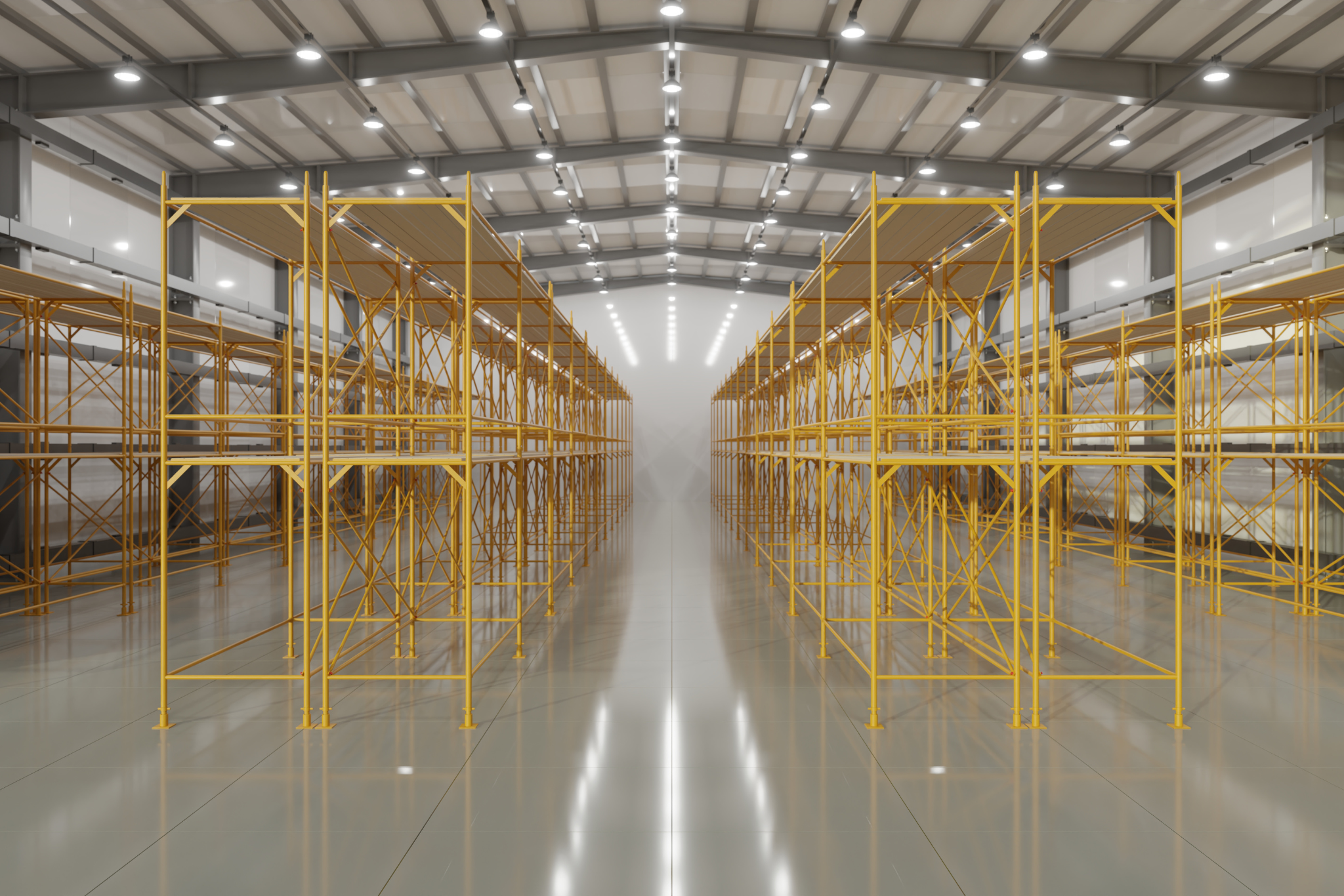
While there are obvious signs that your distribution center is due for an update, such as a system failure, major business change or disruption, inefficiencies in your warehouse design can be harder to spot but prove to be just as costly and catastrophic to your warehouse operations. According to CBRE, the average age of warehouses in the U.S. is 43 years old, with more than a quarter of the country’s total warehouse space over 50 years old. And while new construction projects are in the pipeline, many U.S. markets are still experiencing record-high rent increases across the industrial sector.
Despite aging buildings, many companies may be able to gain higher efficiency and throughput by updating their current warehouse operations and improving their warehouse design. Before considering a new facility, here are five areas to evaluate and optimize within your existing distribution centers.
Warehouse Design: Space & Layout
The first area to assess is your warehouse layout, space utilization and overall design. What is your inventory capacity percentage? This will show you how many storage locations are occupied and how many are still available based on your warehouse’s capacity. If your inventory capacity rate is over 85%, your staff will spend more time trying to find a storage location, which negatively impacts productivity and efficiency. This can be offset with directed putaway if your warehouse management system (WMS) offers this functionality.
In addition to the inventory capacity, you should also look for any areas of physical congestion. Are you storing products in aisles or on the floor behind pick positions? Do you have to move a pallet to access a pallet? Congestion and a lack of available space within the warehouse can lead to storage outside of the building, with products stuck at the ports, in drayage or piling upon the loading docks or in the parking lot, further reducing labor KPIs and shipping capabilities.
Another test is a velocity report. Most WMS solutions can run this report and given the proper sort criteria, it will show the activity by SKU, enabling management to understand where space is occupied without movement creating a false “full building.” Purging of old or remanent inventory can usually release 10-15% of the positions.
For insights on improving space utilization, visit Warehouse Design: How to Improve Your Warehouse Storage and Space Utilization.
Inventory
Another sign it may be time to update your warehouse is a change in your inventory, order profiles and volumes. A shift towards direct-to-consumer fulfillment will require different processes—as well as more labor and space—than distribution centers that were designed to handle traditional retail store replenishment. Additionally, an increase in e-commerce sales means companies will be processing more individual items instead of full cases, which can lead to potential delays and picking errors. Ask yourself the following questions to determine if a redesign may be necessary:
- Do you have orders that are missing the fill rate or do not ship on time?
- Are you switching from typical retail distribution to e-commerce distribution?
- Is your company expected to grow in e-commerce or a different vertical?
- Are you growing organically or through acquisition?
- Is the growth consistent with your current operational model?
- Is your transportation moving from LTL to parcel?
In short, understanding what you have, your projected growth and the requirements of that future-state environment is paramount to guiding changes in your distribution center operations.
Labor
Are you experiencing high turnover rates? While logistics and warehouse workers typically experience more turnover than other industries, a high attrition rate could indicate a variety of issues, including poor management, bad or unsafe working conditions, unattainable standards or low pay. If the workload is too high for your current staff, it could lead to inefficiencies, higher costs and lower productivity.
Implementing a comprehensive onboarding program is also critical to ensure employees are properly trained on warehouse processes and safety and are performing at optimal efficiency.
Another area to evaluate is your ratio of full-time to temporary staff. While peak season volumes may require additional help, it is important to ensure you are not relying too heavily on temporary workers to fill labor gaps. Depending on the CPG being handled and shipped, there are different ratios to guide you.
Processes
Inefficient warehouse processes can lead to increased costs, time and errors, which can also have a negative impact on both employee and customer satisfaction and retention. When assessing your warehouse operations, look at processes that minimize steps and touches, which will increase speed, accuracy and cost savings.
One of the most important processes to optimize is order picking, which accounts for more than half of a distribution center’s operating costs and labor resources. Companies should also evaluate receiving, putaway, packing, shipping, replenishment and returns processes to identify opportunities to improve warehouse operations, maximize space and increase capacity and service levels.
A basic distribution center assessment and evaluation study can identify potential shortfalls and offer insights into a “Do Now, Do Later” program for management to execute.
A detailed assessment can help prioritize improvements in a "Do Now, Do Later" roadmap. To understand how consulting firms optimize warehouse processes, explore 5 Reasons to Select a Full-Service Supply Chain Consulting Firm for Your Warehouse Design Project.
Warehouse Design: Equipment & Technology
While it may be easy to tell when systems fail, there are other less obvious ways your material handling equipment and technology could be telling you that it is time for an upgrade. If your material handling systems are more than 10-15 years old, they may not be operating at maximum efficiency or capable of handling your changing business needs. In addition to age, other reasons to consider updating your equipment include:
- Your maintenance budget is increasing annually
- Your spare parts spend is increasing
- You are repeatedly repairing the same pieces of equipment
- Your equipment cannot accommodate a reduction in staff or increase in throughput
- Your equipment is no longer supported by the manufacturer or supplier
- You are frequently experiencing downtime, errors and/or other performance-related issues
Along with equipment, companies must also assess their WMS and other software solutions to identify any gaps or areas for improvement. Telltale signs that it is time to upgrade your WMS include:
- Your current system lacks customization
- You have to supplement your system with spreadsheets
- You have different processes in different buildings
- You are spending more time to onboard new products
In addition to providing maximum service and efficiency at the lowest possible cost, the optimal warehouse design will also have the flexibility to adapt to changing requirements and support long-term business growth. An experienced supply chain consultant can perform a thorough warehouse assessment to identify potential operational and process improvements. Contact us today to learn how we can use our warehouse design expertise to help you optimize your distribution operations and continue to thrive in today’s highly competitive environment.
For a step-by-step guide to warehouse design success, explore Warehouse Design: 7 Essential Steps for Designing a New Distribution Center.
How can we help improve your supply chain operations?
Schedule a consultation or contact Tompkins Solutions for more information.

Featured Posts
Discover valuable resources to enhance your knowledge.





